Streamlined onboarding process, reduced lead time from 1 week to minutes.
SeaBoard User Onboarding
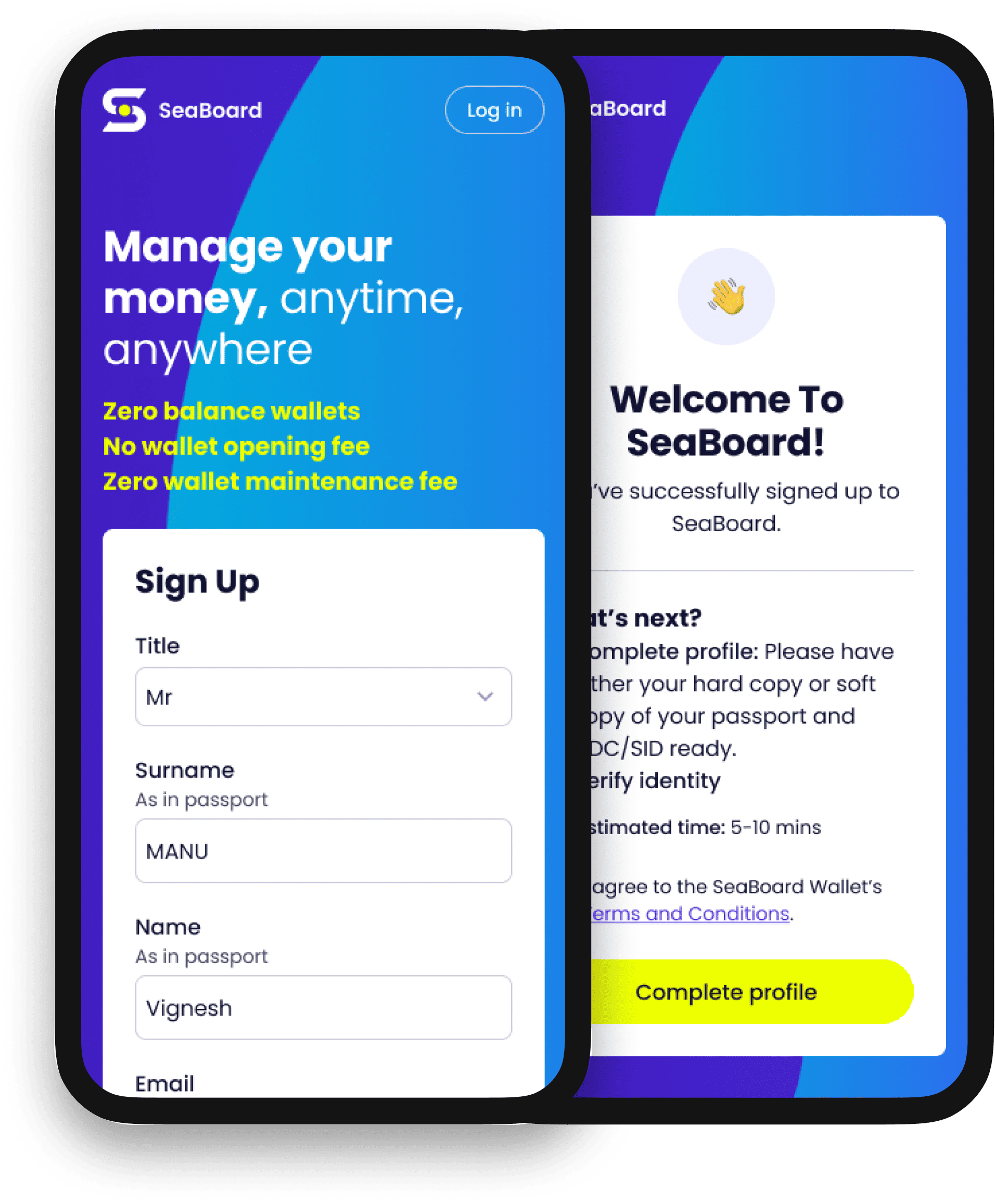
Company
Role
Responsibility
- User flow
- Information architecture
- Interaction design
- Visual design
- Design system
Impact
- Reducing lead time from 1 week to minutes
- Eliminating 2 intermediaries
Summary
I redesigned SeaBoard’s onboarding process to make it more efficient and user-friendly. The original process was manual and hindered user growth. By automating the process, we achieved a 99% reduction in onboarding lead time and eliminated two intermediaries.
Background
Seaboard is a personal banking platform designed for seafarers, enabling them to manage finances and make payments easily, whether overseas or on board.
Challenges and Project Goal
Our initial onboarding process was intentionally manual to quickly launch the product and validate the business idea. As the user base grew, the onboarding flow limited user growth and prevented rapid scaling.
The project goal is to redesign the onboarding process to support onboarding seafarers at scale.
Research
I conducted interviews with the ops team to identify operational challenges and pain points faced by seafarers during sign-up. The current onboarding flow had 4 broad steps, each with critical UX issues due to manual workflows.
The 4 broad steps and their respective issues are as follows:
💾 Data collection & account creation
Ops team manually collects personal information and documents from interested seafarers for account creation.
Issues:
- Increased user frustration due to lengthy back and forth communication
- Delayed account creation
👤 Manual identity verification and updates
Ops notifies partners manually for identity verification. Partners manually verifies identities and updates ops once completed.
Issues:
- Extended lead time for user verification
- Increased risk of human errors (e.g., forgetting to notify other party, missing updates)
📧 Manual invitation email triggering
After verification, ops manually send account activation email to users via system.
Issues:
- Additional effort to invite users
- Difficulty in tracking invitations
🔄 Missing email, synchronisation issues
Seafarers miss activation emails due to email oversight or synchronisation issues (bad internet connection at sea).
Issues:
- Increased inquiries about onboarding progress
- Delay in account activation
Ideation and Brainstorming
The product team proposed 3 options for streamlining the onboarding process:
- Assisted: Operations team collects seafarer information from employer systems for account creation, and seafarers complete automated identity verification.
- Self-Serve: Seafarers fill in information and complete automated identity verification themselves.
- Automated Self-Serve: Seafarers fill in information using automated form filling (SingPass-like) and complete automated identity verification themselves.
The team selected the Self-Serve approach based on 4 key factors:
- Minimal steps
- Minimal identity verification time
- Minimal human dependencies
- Technical feasibility
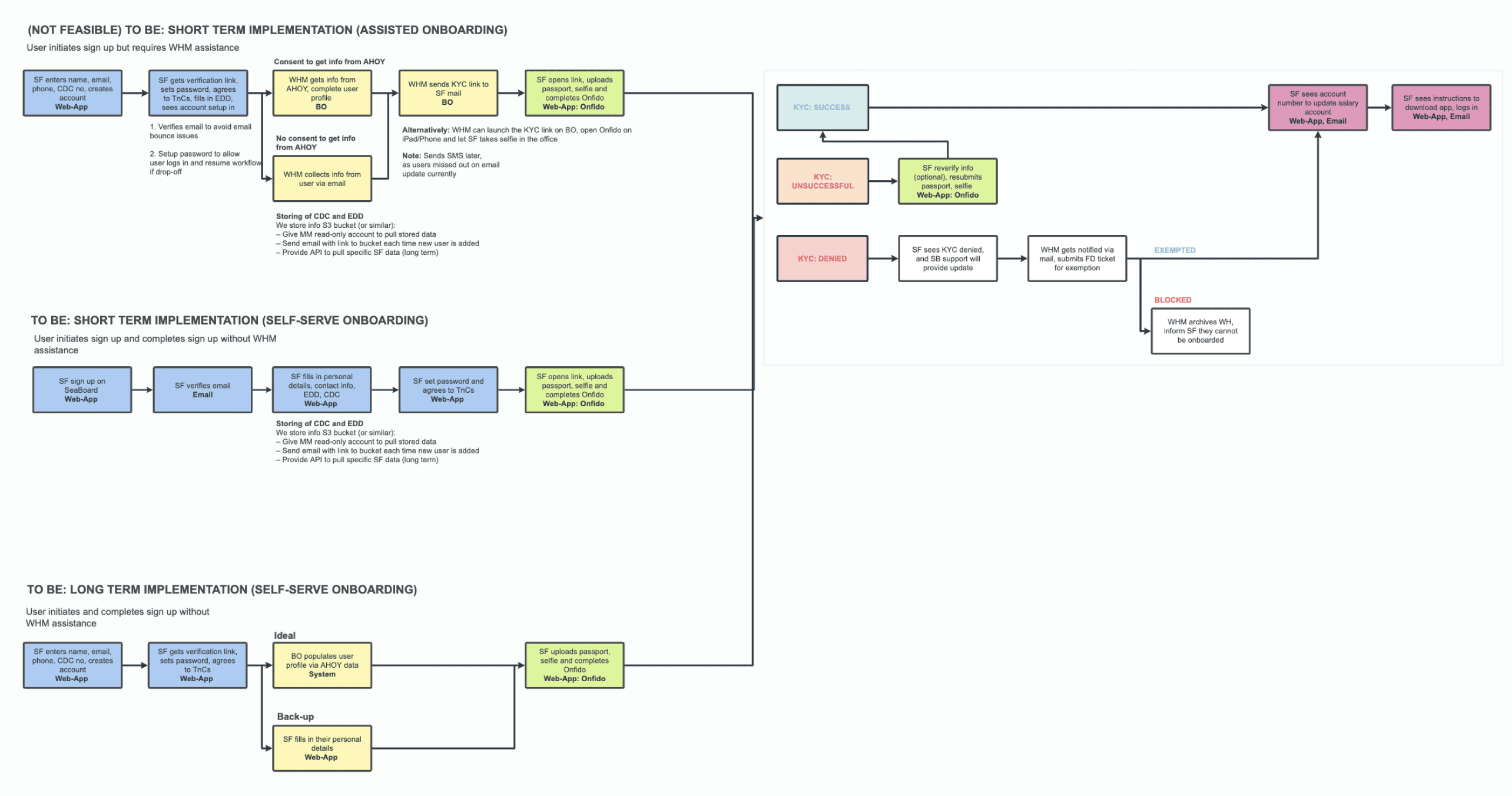
Information Architecture
Defining Process Flow
Based on the high-level journey map, I broke down the steps and mapped out a detailed process flow. This helped define the key screens, steps taken on each screen, and user/system interactions.
I then conducted an alignment and working session with the team to align on the process flow and define the back-end APIs required together with the developers.
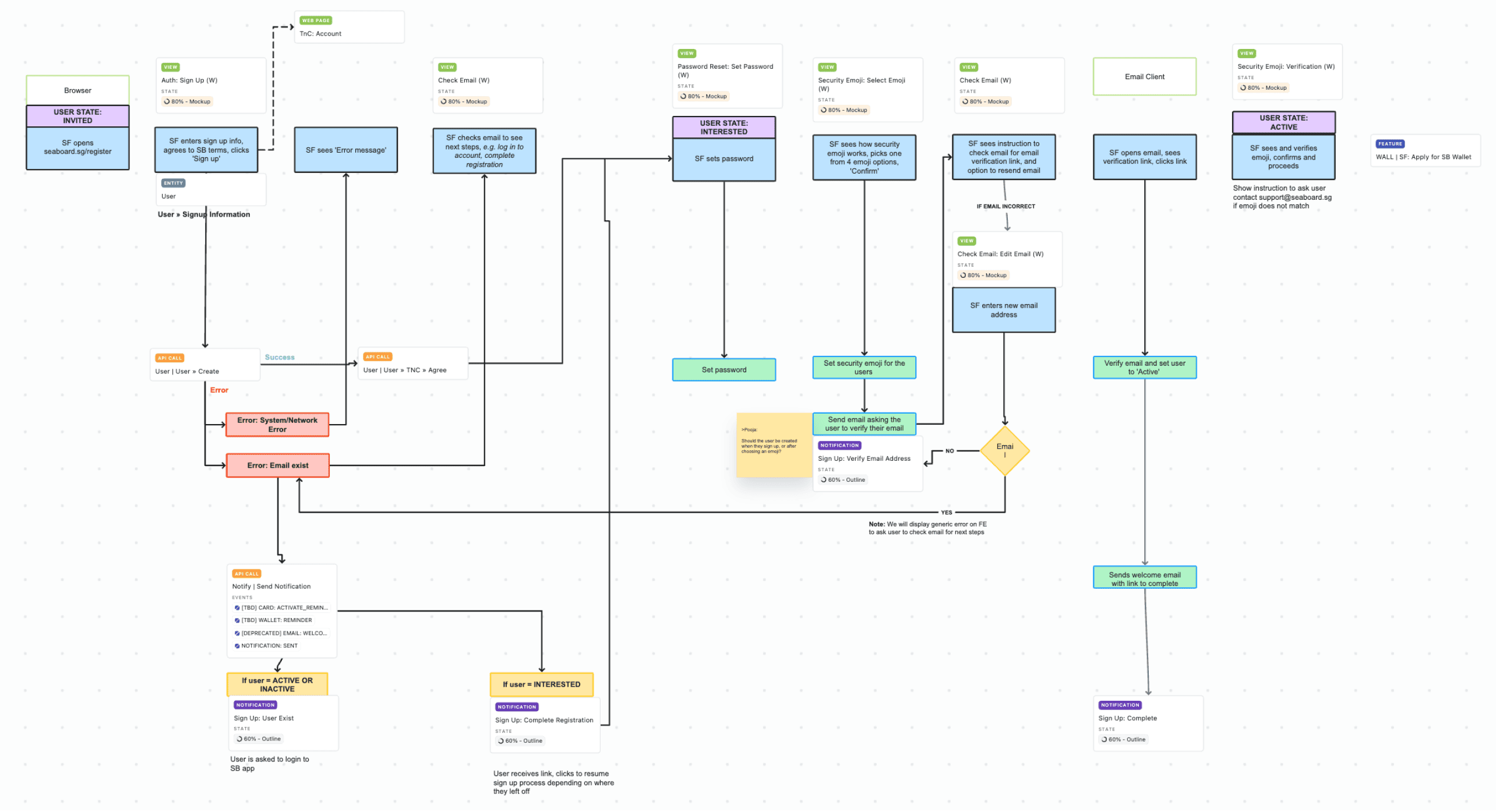
Defining Core Model
Once the key screen were identified, I defined the page structure using the core model, considering:
- Page purpose: Aligning business goals, user goals with the screen
- Page structure and information: Outlined abstractly using priority guides in bullet form
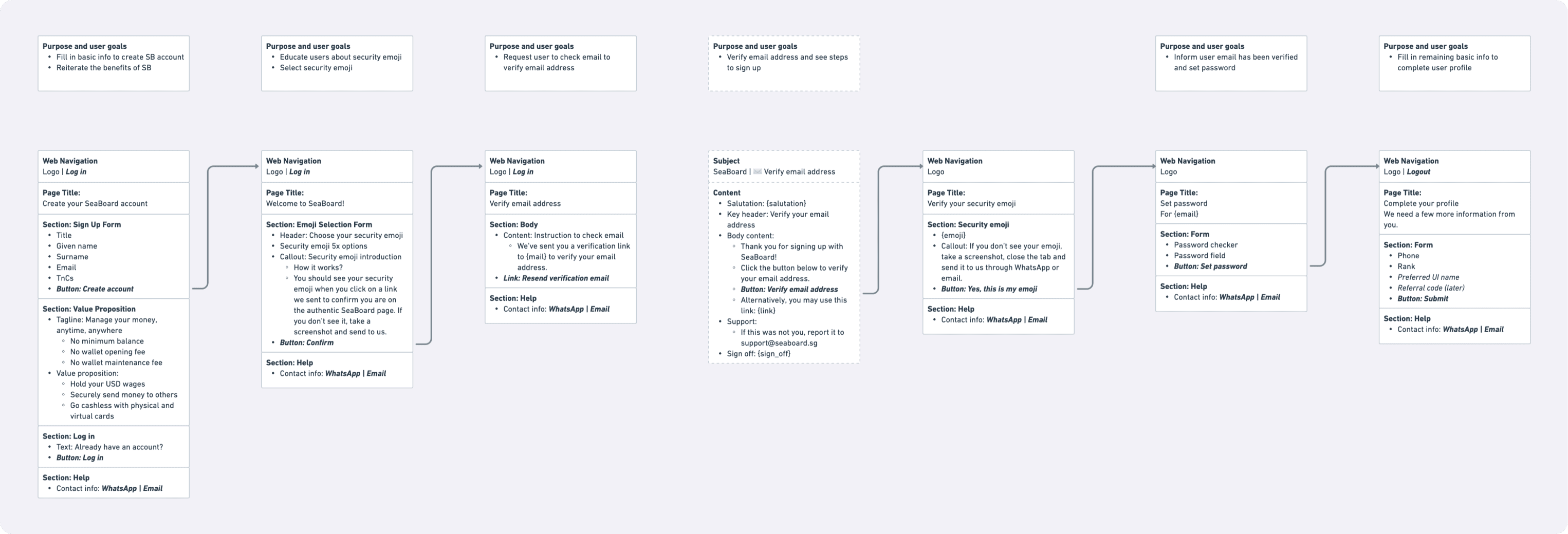
Wireframe
With details outlined, I created wireframes for each page using our component library to visualise the flow better and facilitate design reviews.
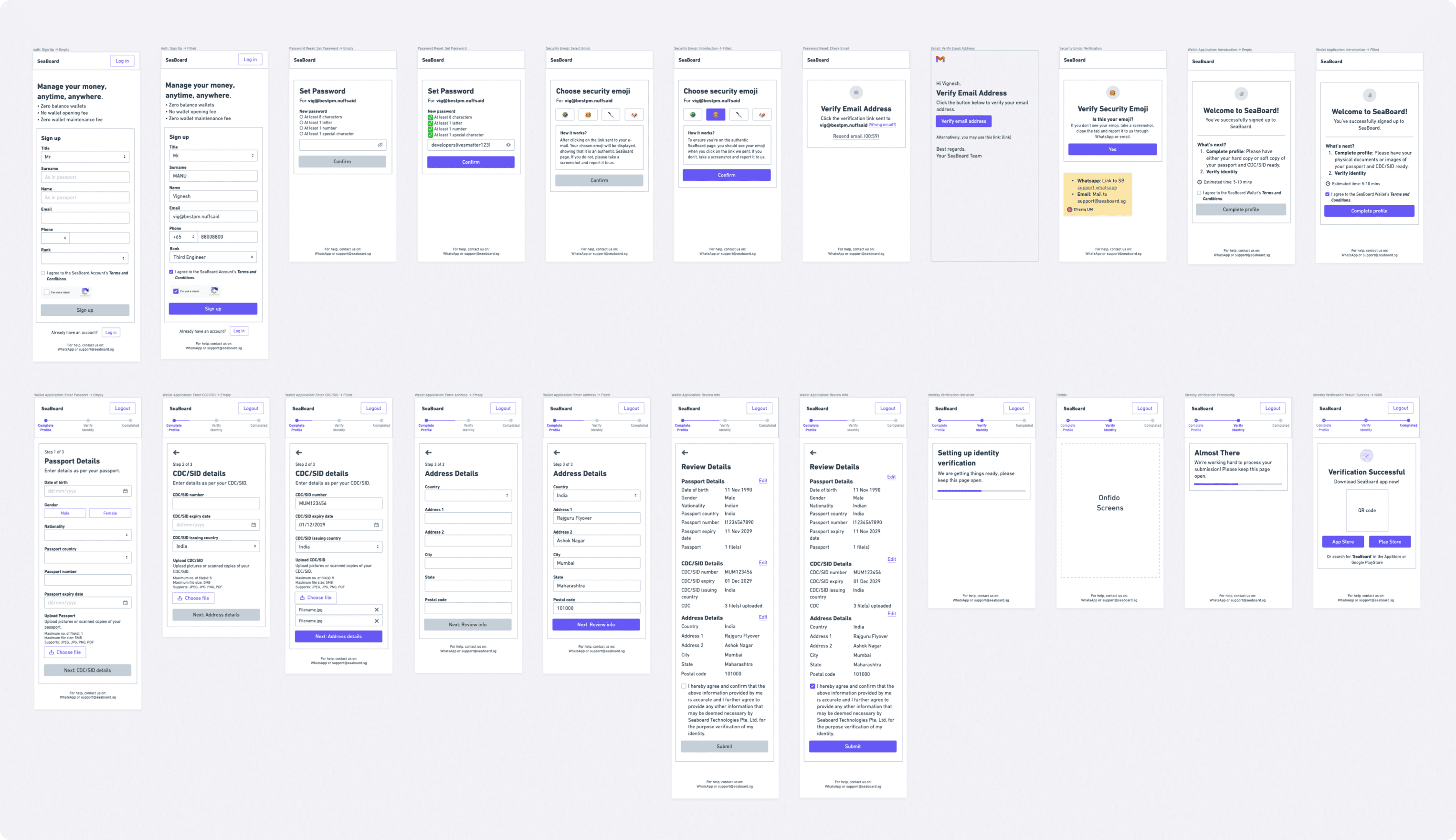
Design Solutions
Self-Sign Up and Profile Creation
- Previous issue: Manual data collection and account creation
- Solution: Seafarers can now sign up independently, supplying their information and creating their accounts without needing manual assistance from the operations team.
As the process can be lengthy, I grouped the steps into 2 key milestones:
- Collecting basic information for account creation
- Collecting complete personal information for identity verification
This approach:
- Breaks down the process into manageable tasks
- Allows users to continue or resume later, accommodating seafarers who may not have necessary documents readily available
- Provides a sense of progress and accomplishment with each milestone completion
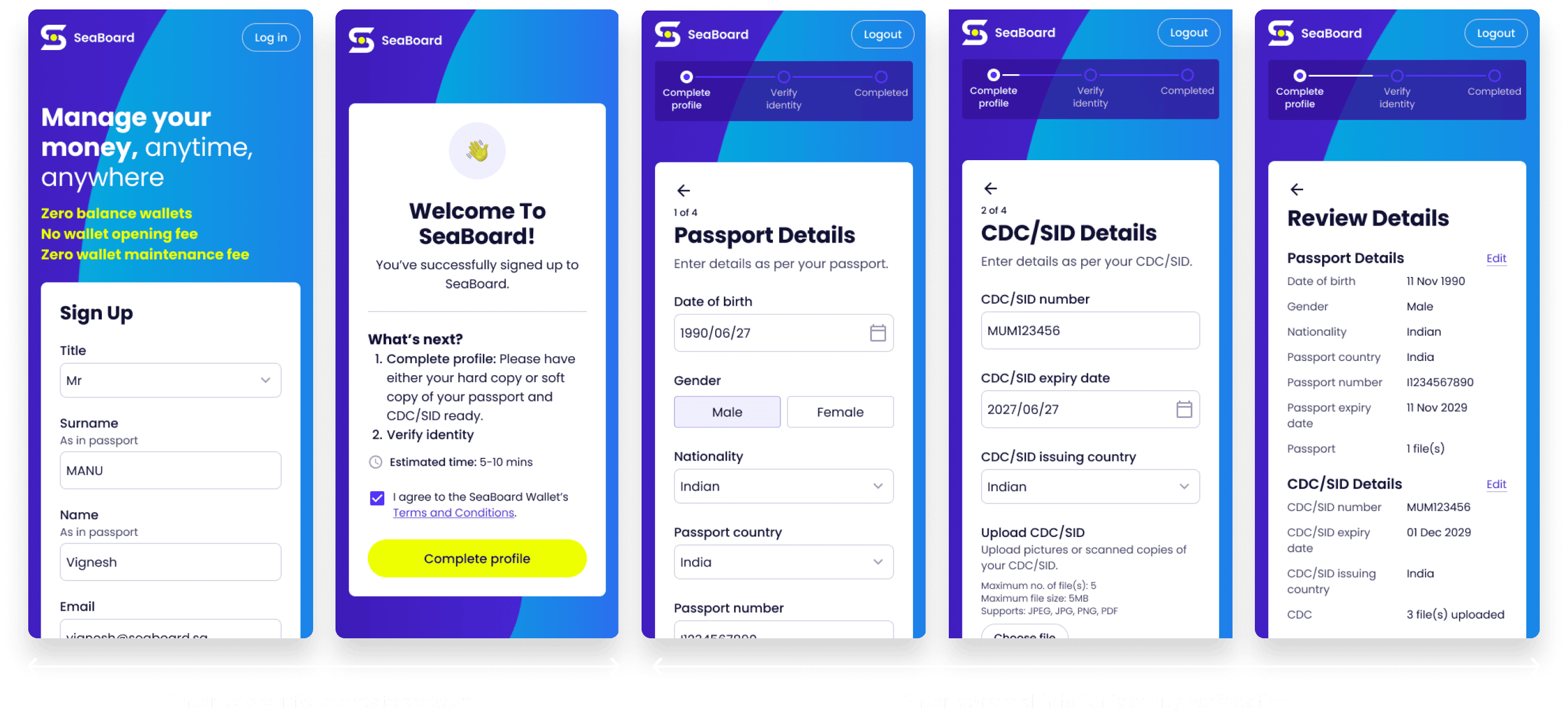
To enhance the UX of the long form-filling process, I communicated upcoming steps clearly to prepare users on:
- What to expect
- Required documents
- Estimated time needed to complete each step
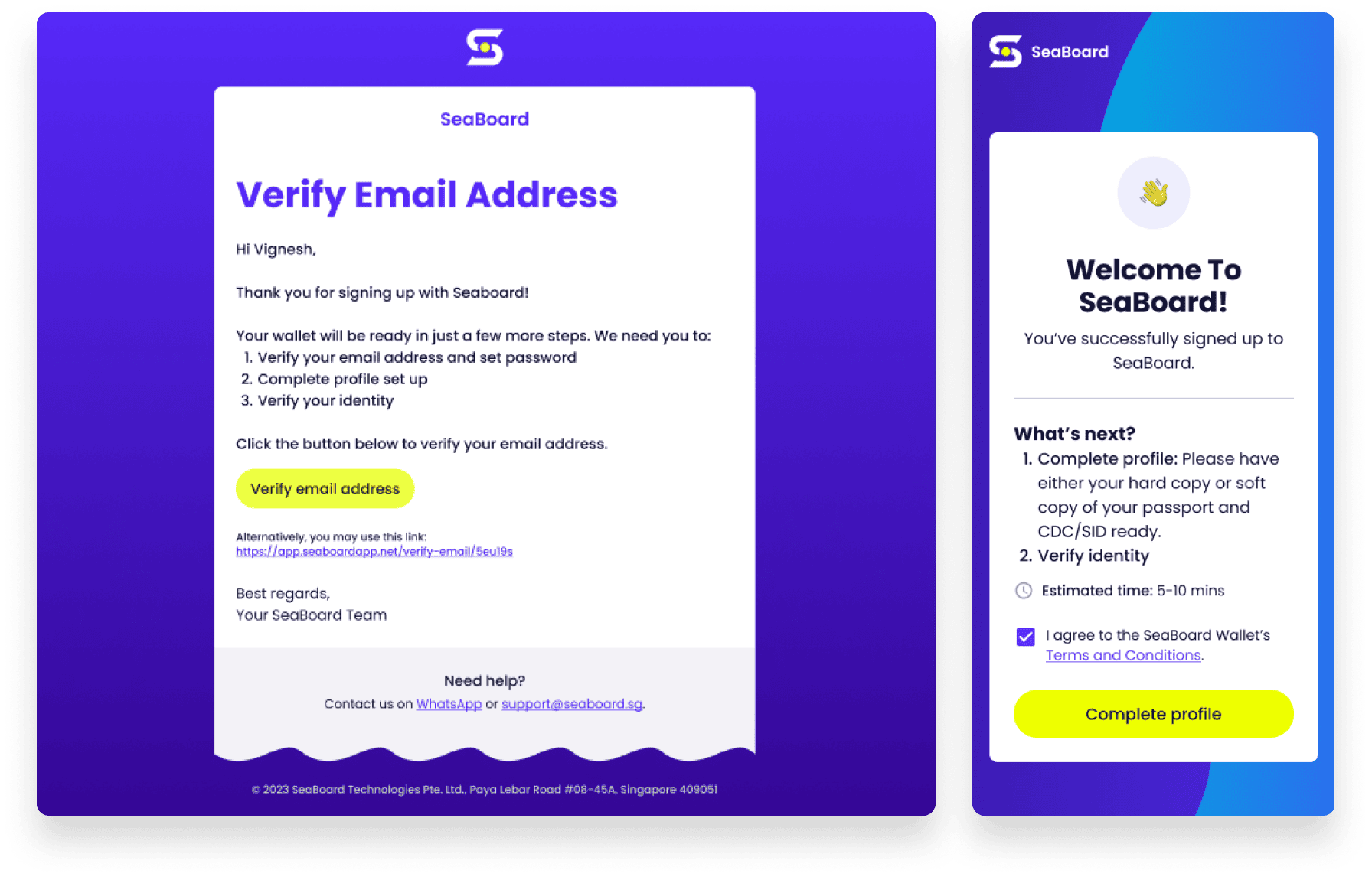
A wizard pattern with a progress bar was used to help users track their progress, understand where they are in the process, and anticipate how much time remains.

Automated Identity Verification
- Previous issue: Manual identity verification and updates
- Solution: Integration with a 3rd-party platform enables automated identity verification, eliminating the need for manual verification.
To provide a seamless experience, I embedded the identity verification workflow within the page templates, allowing users to complete the process independently while maintaining our branding.
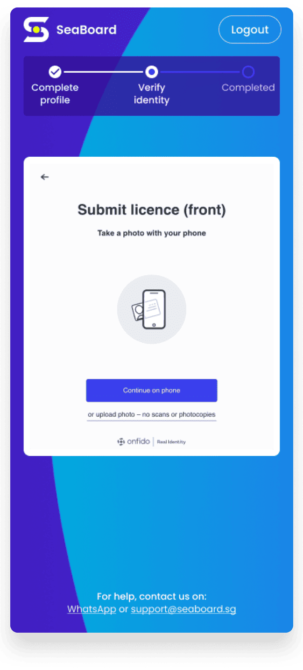
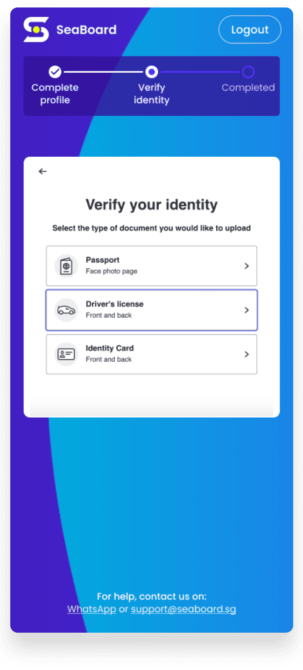
Instant App Download
- Previous issue: Manual invitation emails and synchronisation issues
- Solution: Upon completing identity verification, seafarers are directed to download the app, allowing immediate access to the platform.
To facilitate a seamless transition, I designed a clear call-to-action (CTA) at the end of the onboarding workflow, directing seafarers to the relevant app store to download the application based on their device type.
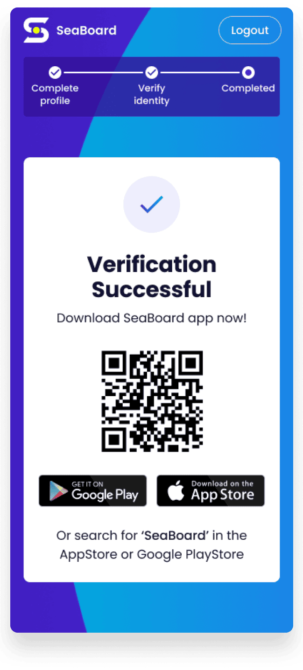
Documentation
The design documentation was prepared for developers for implementation, including specifications, component requirements, and UI mockups.
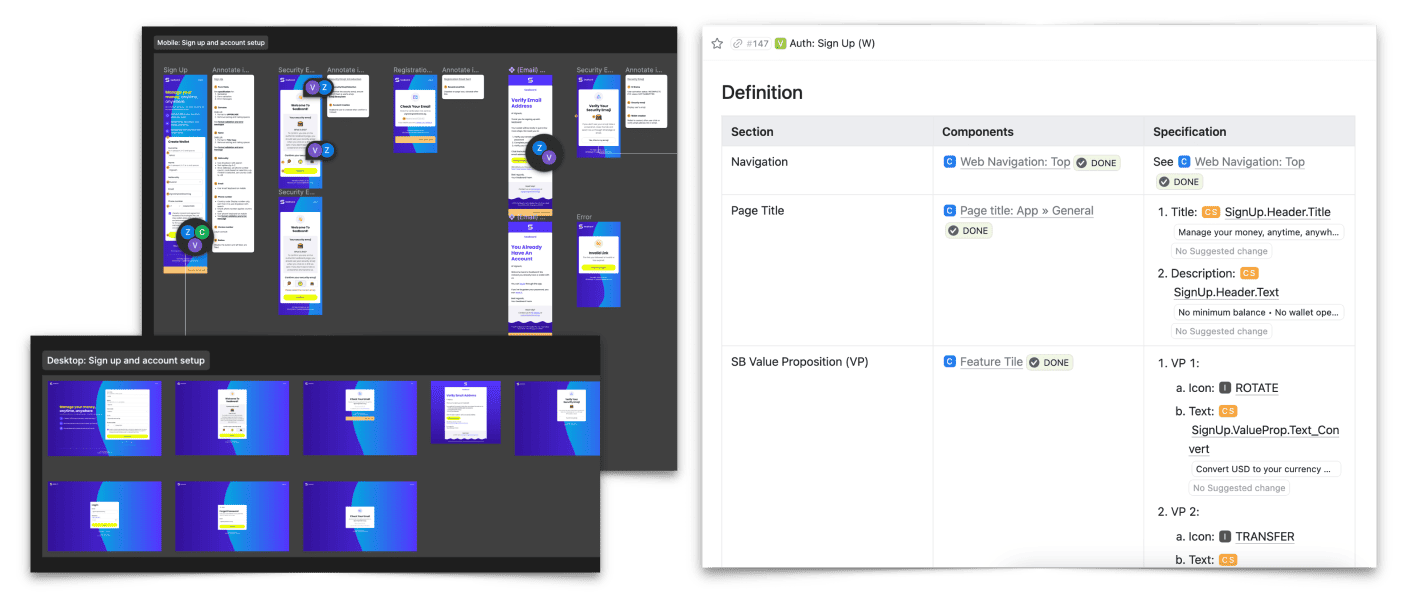
Impact
⬇️ Reduced lead time from 1 week to minutes.
⚙️ Eliminating 2 intermediaries.
For confidentiality reasons I have omitted the actual values for these metrics.
